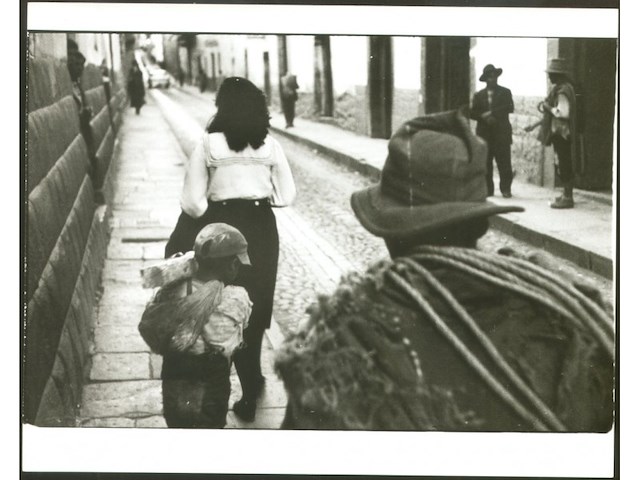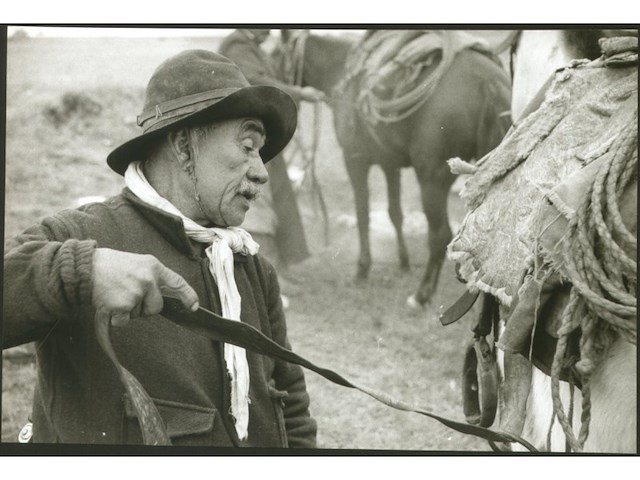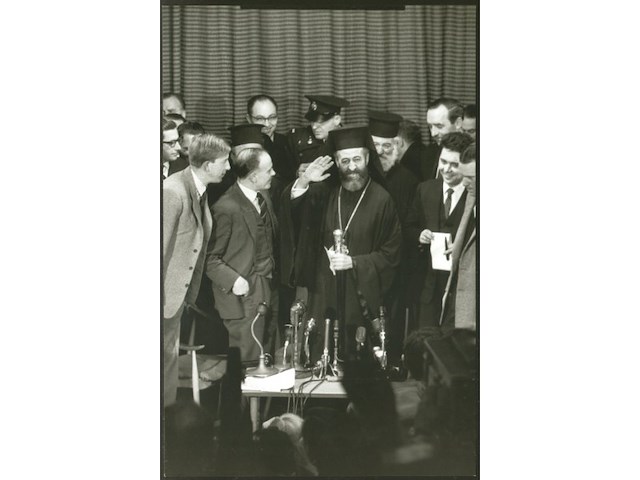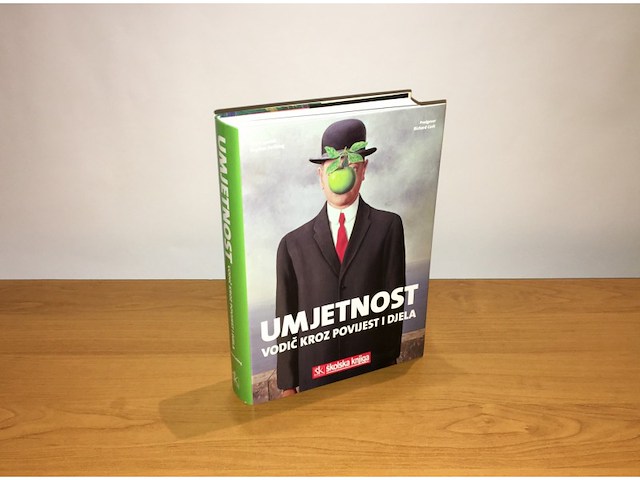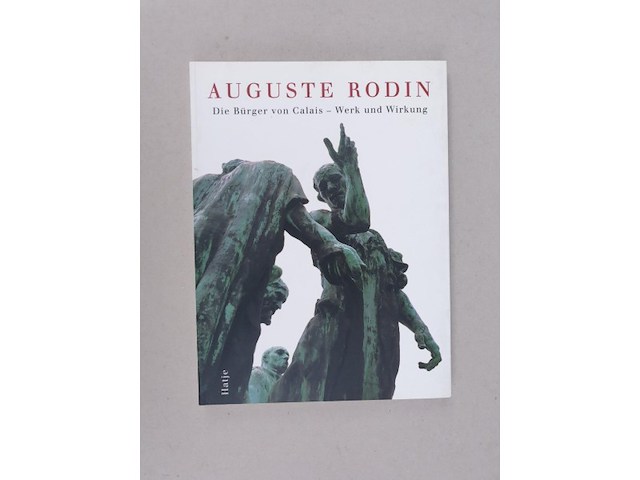Pratite promene cene putem maila
- Da bi dobijali obaveštenja o promeni cene potrebno je da kliknete Prati oglas dugme koje se nalazi na dnu svakog oglasa i unesete Vašu mail adresu.
1-10 od 10 rezultata
Broj oglasa
Prikaz
1-10 od 10
1-10 od 10 rezultata
Prikaz
Prati pretragu "ren"
Vi se opustite, Gogi će Vas obavestiti kad pronađe nove oglase za tražene ključne reči.
Gogi će vas obavestiti kada pronađe nove oglase.
Režim promene aktivan!
Upravo ste u režimu promene sačuvane pretrage za frazu .
Možete da promenite frazu ili filtere i sačuvate trenutno stanje
dim. 20 x 26 cm nije potpisana, nema pecat...print iz 80tih it is not signed, no seal PHOTOGRAPHY PHOTO René Burri (born 9 April 1933, Zurich) is a Swiss photographer known for his photos of major political, historical and cultural events and key figures of the second half of the 20th century. Burri worked for Magnum Photos and has been photographing political, military and artistic figures and scenes since 1946. He has made portraits of Che Guevara and Pablo Picasso as well as iconic pictures of São Paulo and Brasília. Burri studied in Zurich, Switzerland at the School of Applied Arts from 1949 to 1953, where he worked under Hans Finsler, Alfred Willimann and Johannes Itten. From 1953 to 1955 he began working as a documentary filmmaker while completing military service. During this time he also began working with Leica cameras. Then he worked for Disney as a cameraman until 1955. From 1956 to 1959 he traveled extensively to places including Turkey, Egypt, Syria, Iraq, Jordan, Lebanon, Italy, France, Spain, Greece, Brazil, and Japan, which led to publications in Life, Look, Stern, Paris-Match, Epoca, and New York Times, as well as a photographic essay `El Gaucho` which appeared in Du. Burri first began working with Magnum Photos in 1955 through Werner Bischof, becoming a full member in 1959 and being elected chair of Magnum France in 1982. His first report `Touch of Music for the Deaf` on deaf-mute children was published by Life. In 1965 he assisted with the creation of Magnum Films which lead to his work on the Magnum-BBC joint production of, The Two Faces of China. In 1967 he produced a documentary on the Six-Day War in Jerusalem for German television. He produced the film Jean Tinguely in 1972. In 1963 Burri was working in Cuba when he was able to photograph the revolutionary Che Guevara; these images of Guevara smoking a cigar have become iconic. Notably, after taking the photos, Burri remembers Guevara `scaring the hell out of him`. Describing a situation where an angry Che was pacing his tiny office like `a caged tiger`, while being interviewed by an American woman from Look magazine. While `hectoring` the reporter and `chomping on his cigar`, Che suddenly looked Burri straight in the eye and told him `if I catch up with your friend Andy, I`ll cut his throat` (while slowly drawing his finger across his neck). Andy was Andrew St. George, a fellow Magnum photographer, who had travelled with Che in the Sierra Maestra, and then later filed reports for American intelligence.
dim. 25 x 17 cm nije potpisana, nema pecat...print iz 70tih PHOTOGRAPHY NOT SIGNED, NO SEAL , NO STAMP, RC paper René Burri (born 9 April 1933, Zurich) is a Swiss photographer known for his photos of major political, historical and cultural events and key figures of the second half of the 20th century. Burri worked for Magnum Photos and has been photographing political, military and artistic figures and scenes since 1946. He has made portraits of Che Guevara and Pablo Picasso as well as iconic pictures of São Paulo and Brasília. Burri studied in Zurich, Switzerland at the School of Applied Arts from 1949 to 1953, where he worked under Hans Finsler, Alfred Willimann and Johannes Itten. From 1953 to 1955 he began working as a documentary filmmaker while completing military service. During this time he also began working with Leica cameras. Then he worked for Disney as a cameraman until 1955. From 1956 to 1959 he traveled extensively to places including Turkey, Egypt, Syria, Iraq, Jordan, Lebanon, Italy, France, Spain, Greece, Brazil, and Japan, which led to publications in Life, Look, Stern, Paris-Match, Epoca, and New York Times, as well as a photographic essay `El Gaucho` which appeared in Du. Burri first began working with Magnum Photos in 1955 through Werner Bischof, becoming a full member in 1959 and being elected chair of Magnum France in 1982. His first report `Touch of Music for the Deaf` on deaf-mute children was published by Life. In 1965 he assisted with the creation of Magnum Films which lead to his work on the Magnum-BBC joint production of, The Two Faces of China. In 1967 he produced a documentary on the Six-Day War in Jerusalem for German television. He produced the film Jean Tinguely in 1972. In 1963 Burri was working in Cuba when he was able to photograph the revolutionary Che Guevara; these images of Guevara smoking a cigar have become iconic. Notably, after taking the photos, Burri remembers Guevara `scaring the hell out of him`. Describing a situation where an angry Che was pacing his tiny office like `a caged tiger`, while being interviewed by an American woman from Look magazine. While `hectoring` the reporter and `chomping on his cigar`, Che suddenly looked Burri straight in the eye and told him `if I catch up with your friend Andy, I`ll cut his throat` (while slowly drawing his finger across his neck). Andy was Andrew St. George, a fellow Magnum photographer, who had travelled with Che in the Sierra Maestra, and then later filed reports for American intelligence.
dim. 25 x 17 cm nije potpisana, nema pecat...print iz 70tih PHOTOGRAPHY NOT SIGNED, NO SEAL , NO STAMP, RC paper René Burri (born 9 April 1933, Zurich) is a Swiss photographer known for his photos of major political, historical and cultural events and key figures of the second half of the 20th century. Burri worked for Magnum Photos and has been photographing political, military and artistic figures and scenes since 1946. He has made portraits of Che Guevara and Pablo Picasso as well as iconic pictures of São Paulo and Brasília. Burri studied in Zurich, Switzerland at the School of Applied Arts from 1949 to 1953, where he worked under Hans Finsler, Alfred Willimann and Johannes Itten. From 1953 to 1955 he began working as a documentary filmmaker while completing military service. During this time he also began working with Leica cameras. Then he worked for Disney as a cameraman until 1955. From 1956 to 1959 he traveled extensively to places including Turkey, Egypt, Syria, Iraq, Jordan, Lebanon, Italy, France, Spain, Greece, Brazil, and Japan, which led to publications in Life, Look, Stern, Paris-Match, Epoca, and New York Times, as well as a photographic essay `El Gaucho` which appeared in Du. Burri first began working with Magnum Photos in 1955 through Werner Bischof, becoming a full member in 1959 and being elected chair of Magnum France in 1982. His first report `Touch of Music for the Deaf` on deaf-mute children was published by Life. In 1965 he assisted with the creation of Magnum Films which lead to his work on the Magnum-BBC joint production of, The Two Faces of China. In 1967 he produced a documentary on the Six-Day War in Jerusalem for German television. He produced the film Jean Tinguely in 1972. In 1963 Burri was working in Cuba when he was able to photograph the revolutionary Che Guevara; these images of Guevara smoking a cigar have become iconic. Notably, after taking the photos, Burri remembers Guevara `scaring the hell out of him`. Describing a situation where an angry Che was pacing his tiny office like `a caged tiger`, while being interviewed by an American woman from Look magazine. While `hectoring` the reporter and `chomping on his cigar`, Che suddenly looked Burri straight in the eye and told him `if I catch up with your friend Andy, I`ll cut his throat` (while slowly drawing his finger across his neck). Andy was Andrew St. George, a fellow Magnum photographer, who had travelled with Che in the Sierra Maestra, and then later filed reports for American intelligence.
dim. 25 x 17 cm nije potpisana, nema pecat...print iz 70tih PHOTOGRAPHY NOT SIGNED, NO SEAL , NO STAMP, RC paper René Burri (born 9 April 1933, Zurich) is a Swiss photographer known for his photos of major political, historical and cultural events and key figures of the second half of the 20th century. Burri worked for Magnum Photos and has been photographing political, military and artistic figures and scenes since 1946. He has made portraits of Che Guevara and Pablo Picasso as well as iconic pictures of São Paulo and Brasília. Burri studied in Zurich, Switzerland at the School of Applied Arts from 1949 to 1953, where he worked under Hans Finsler, Alfred Willimann and Johannes Itten. From 1953 to 1955 he began working as a documentary filmmaker while completing military service. During this time he also began working with Leica cameras. Then he worked for Disney as a cameraman until 1955. From 1956 to 1959 he traveled extensively to places including Turkey, Egypt, Syria, Iraq, Jordan, Lebanon, Italy, France, Spain, Greece, Brazil, and Japan, which led to publications in Life, Look, Stern, Paris-Match, Epoca, and New York Times, as well as a photographic essay `El Gaucho` which appeared in Du. Burri first began working with Magnum Photos in 1955 through Werner Bischof, becoming a full member in 1959 and being elected chair of Magnum France in 1982. His first report `Touch of Music for the Deaf` on deaf-mute children was published by Life. In 1965 he assisted with the creation of Magnum Films which lead to his work on the Magnum-BBC joint production of, The Two Faces of China. In 1967 he produced a documentary on the Six-Day War in Jerusalem for German television. He produced the film Jean Tinguely in 1972. In 1963 Burri was working in Cuba when he was able to photograph the revolutionary Che Guevara; these images of Guevara smoking a cigar have become iconic. Notably, after taking the photos, Burri remembers Guevara `scaring the hell out of him`. Describing a situation where an angry Che was pacing his tiny office like `a caged tiger`, while being interviewed by an American woman from Look magazine. While `hectoring` the reporter and `chomping on his cigar`, Che suddenly looked Burri straight in the eye and told him `if I catch up with your friend Andy, I`ll cut his throat` (while slowly drawing his finger across his neck). Andy was Andrew St. George, a fellow Magnum photographer, who had travelled with Che in the Sierra Maestra, and then later filed reports for American intelligence.
dim. 25 x 16 cm nije potpisana, nema pecat...print iz 80tih CYPRUS - RETURN OF ARCHBISHOP MAKARIOS PHOTOGRAPHY NOT SIGNED, NO SEAL René Burri (born 9 April 1933, Zurich) is a Swiss photographer known for his photos of major political, historical and cultural events and key figures of the second half of the 20th century. Burri worked for Magnum Photos and has been photographing political, military and artistic figures and scenes since 1946. He has made portraits of Che Guevara and Pablo Picasso as well as iconic pictures of São Paulo and Brasília. Burri studied in Zurich, Switzerland at the School of Applied Arts from 1949 to 1953, where he worked under Hans Finsler, Alfred Willimann and Johannes Itten. From 1953 to 1955 he began working as a documentary filmmaker while completing military service. During this time he also began working with Leica cameras. Then he worked for Disney as a cameraman until 1955. From 1956 to 1959 he traveled extensively to places including Turkey, Egypt, Syria, Iraq, Jordan, Lebanon, Italy, France, Spain, Greece, Brazil, and Japan, which led to publications in Life, Look, Stern, Paris-Match, Epoca, and New York Times, as well as a photographic essay `El Gaucho` which appeared in Du. Burri first began working with Magnum Photos in 1955 through Werner Bischof, becoming a full member in 1959 and being elected chair of Magnum France in 1982. His first report `Touch of Music for the Deaf` on deaf-mute children was published by Life. In 1965 he assisted with the creation of Magnum Films which lead to his work on the Magnum-BBC joint production of, The Two Faces of China. In 1967 he produced a documentary on the Six-Day War in Jerusalem for German television. He produced the film Jean Tinguely in 1972. In 1963 Burri was working in Cuba when he was able to photograph the revolutionary Che Guevara; these images of Guevara smoking a cigar have become iconic. Notably, after taking the photos, Burri remembers Guevara `scaring the hell out of him`. Describing a situation where an angry Che was pacing his tiny office like `a caged tiger`, while being interviewed by an American woman from Look magazine. While `hectoring` the reporter and `chomping on his cigar`, Che suddenly looked Burri straight in the eye and told him `if I catch up with your friend Andy, I`ll cut his throat` (while slowly drawing his finger across his neck). Andy was Andrew St. George, a fellow Magnum photographer, who had travelled with Che in the Sierra Maestra, and then later filed reports for American intelligence. --------------------------------------------------------- Makarios III, original name Mikhail Khristodolou Mouskos (born August 13, 1913, Pano Panayia, Paphos, Cyprus—died August 3, 1977, Nicosia), archbishop and primate of the Orthodox Church of Cyprus. He was a leader in the struggle for enosis (union) with Greece during the postwar British occupation, and, from 1959 until his death in 1977, he was the president of independent Cyprus. Mouskos, the son of a poor shepherd, studied in Cyprus and at the University of Athens and later at the School of Theology of Boston University. He was ordained in 1946, became bishop of Kition (Larnaca) in 1948, and on October 18, 1950, was made archbishop. During that time Makarios became identified with the movement for enosis, the archbishop of Cyprus having traditionally played an important political role during the Turkish occupation as ethnarch, or head of the Greek Christian community. Opposing the British government’s proposals for independence or Commonwealth status, as well as Turkish pressures for partition in order to safeguard the island’s sizable Turkish population, Makarios met with the Greek prime minister, Alexandros Papagos, in February 1954 and gained Greek support for enosis. The British soon suspected him of being a leading figure in the EOKA, an armed nationalist movement led by Col. Georgios Grivas. Makarios, however, preferred political bargaining to force and negotiated with the British governor in 1955–56. When these talks proved fruitless and Makarios was arrested for sedition in March 1956 and exiled to the Seychelles, the EOKA intensified its violent campaign. In March 1957 Makarios was released from detention in exile; not immediately permitted to return to the country, however, Makarios traveled to Athens before his arrival in Cyprus the following year. In February 1959 Makarios accepted a compromise that resulted in independence for Cyprus. He was elected president of the new republic on December 13, 1959, with a Turkish vice president. Makarios’s administration was marred by fighting between Greeks and Turks, particularly after December 1963, and the active intervention of both Greece and Turkey. Previously a champion of exclusively Greek interests, he now worked for integration of the two communities, measures the Turks repeatedly resisted. In December 1967 he was obliged to accept a Turkish Cypriot Provisional Administration, which managed Turkish minority affairs outside the jurisdiction of the central government. Despite communal strife, he was elected president for a second term in February 1968. Talks between the two communities remained deadlocked over the question of local autonomy. In 1972 and 1973 other Cypriot bishops called for Makarios to resign, but he was returned unopposed for a third term as head of state in 1973. In July 1974 the Greek Cypriot National Guard, whose officers were mainland Greeks, attempted a coup, planned by the ruling military junta in Athens, to achieve enosis. Makarios fled to Malta and then to London, and Turkey invaded Cyprus and proclaimed a separate state for Turkish Cypriots in the north. Makarios, vowing to resist partition of the island, returned to Cyprus in December, after the fall of the mainland Greek military junta.
Branko Vučićević Avangardni film 1895-1939 Izdavač: radionica SIC, Beograd, 1984 broširan povez, latinica, 160 + 16 strana; 23 x 16 cm; knjiga je ilustrovana crno belim fotografijama i crtežima; Stanje Veoma dobro, kratka posveta na predlistu. Gijom Apoliner, Luis Bunjuel, Rene Kler, Džozef Kornel, Salvador Dali, Šarl Dekukeler, Sergej Ajzenštajn, Grigorij Kozincev, Fernand Ležer, Luj i Ogist Limijer, Laslo Moholj-Nađ, Fransis Pikabija, Valter Rutman, Leopold Survaž, Dziga Vertov, Žan Vigo, Aleksandar Vučo, Bora Ćosić, Marsel Rival,
Branko Vučićević - Avangardni film 1895-1939 Izdavač: radionica SIC, Beograd, 1984 broširan povez, latinica, 160 + 16 strana; 23 x 16 cm; knjiga je ilustrovana crno belim fotografijama i crtežima; Knjiga iz moje licne kolekcije, kupljena nova, pazljivo koriscena. Cista, povez kompaktan, bez tragova koriscenja. Gijom Apoliner, Luis Bunjuel, Rene Kler, Džozef Kornel, Salvador Dali, Šarl Dekukeler, Sergej Ajzenštajn, Grigorij Kozincev, Fernand Ležer, Luj i Ogist Limijer, Laslo Moholj-Nađ, Fransis Pikabija, Valter Rutman, Leopold Survaž, Dziga Vertov, Žan Vigo, Aleksandar Vučo, Bora Ćosić, Marsel Rival,
SALVADOR DALI - retrospective 1920-1980 Autori tekstova - Salvador Dali, Pontus Hulten, Julien Green, Daniel Abadie, Antonina Rodrigo, Maxime Alexandre, Louis Aragon, Andre Breton, Rene Char, Rene Crevel, Paul Eluard, Benjamin Peret, Georges Sadoul, Andre Thirion, Tristan Tzara, Pierre Unik, Albert Valentin, Jose Pierre, Georges Bataille, Gilbert Lascault, James Thrall Soby, Patrice Schmitt, James Bigwood, Michel Tapie, Robert Descharnes, Anne Bernard Izdavač - Centre Georges Pompidou, Musee National d`Art Moderne Godina - 1980 416 strana 30x20 cm ISBN - 2-85850-032-0 Povez - Broširan Stanje - Kao na slici, tekst bez podvlačenja SADRŽAJ: LES SOURCES CATALANES DE SALVADOR DALI La poeta Garcia Lorca et le peintre Dali Exposition Salvador Dali Reflexions Mon amie et la plage Mes Toiles au Salon d`Automne La liberation des doigts SALVADOR DALI ET LUIS BUNUEL Film-art, fil antiartistique Luis Bunjuel Un Chien andalou Scenario Un Chien andalou et la presse L`Age d`or L`Age d`or Revue-programme LE TEMPS DU SURREALISME Breton et Dali Le grand Masturbateur Le `Jeu lugubre` Dali ou l`anti-obscurantisme L`amour Les nouvelles couleurs du `sex-appeal spectral` Les idees lumineuses L`OBJET SURREALISTE Objects surrealistes, objets oniriques L`bojet tel que l`experimentation surrealiste le revele Honneur a l`objet! Dali ecrivain Une Scheherazade du gluant L`Objet invisible L`Inconscient personnel De la psychose paranoiaque dans ses rapports avec Salvador Dali METHODE PARANOIAQUE-CRITIQUE L`Ane pourri Metamporphose de Narcisse REVES ET CAUCHEMARS L`ANGELUS DE MILLET Les Chants de Maldoror DALI ET LE CINEMA Cinquante ans de cinema dalinien Mes secrets cinematographiques Le surrealisme a Hollywood Manifeste mystique RECHERCES VISUELLES Dali, l`image et l`espace Les secrets reveles de Salvador Dali Ako Vas nešto zanima, slobodno pošaljite poruku. Knjiga je na francuskom jeziku Umetnost Slikarstvo Nadrealizam Nadrealisti Nadrealista Nadrealizmu
STEPHEN FARTHING UMJETNOST VODIČ KROZ POVIJEST I DJELA Predgovor - Richard Cork Prevod - Dunja Kalođera, Petra Kljaić, Vedran Pavlić, Maja Rožman Izdavač - Školska knjiga, Zagreb Godina - 2015 576 strana 25 cm ISBN - 978-953-0-61769-8 Povez - Broširan Stanje - Kao na slici, tekst bez podvlačenja SADRŽAJ: Predgovor Uvod 1 Od pretpovijesti do 15. stoljeća 2 15. 116. stoljeće 3 17.i 18. stoljeće 4 19. stoljeće 5 Od 1900. do 1945. 6 Od 1946. do danas Pojmovnik Suradnici Izvori citata Kazalo Popis nositelja autorskih prava objavljenih slika Zahvale `Najpristupačnija povijest svjetske umjetnosti ikad objavljena. Više od 1100 ilustracija u boji najpoznatijih umjetničkih djela. Obuhvaća sve umjetničke forme, od slikarstva i kiparstva do konceptualne umjetnosti, od prapovijesti do naših dana. Umjetnost – vodič kroz povijest i djela započinje sveobuhvatnim povijesnim pregledom koji umjetnost smješta u kontekst društvenih i kulturnih zbivanja od razdoblja prije nastanka prvih država. Knjiga je organizirana kronološki te prati evoluciju umjetničkih razdoblja i pokreta. Bogato ilustrirani stručni tekst pokriva sve umjetničke forme, od slikarstva i kiparstva do konceptualne i izvedbenih umjetnosti. Temeljito vrednovanje ideja i radova ključnih umjetnika otkriva kako su pojedini umjetnici utjecali na rad drugih te što su pokušavali ostvariti svojim djelima. Detaljni kronološki sažetci kulturnih strujanja i života pojedinih umjetnika objašnjavaju povijesni kontekst. Posebno su obrađena i detaljno analizirana remek-djela koja u sebi utjelovljuju ključne značajke svakog pojedinog razdoblja i pokreta. Objašnjeno je sve, od korištenja boja i vizualnih metafora do tehničkih inovacija i trajnog nasljeđa pojedinog djela, što vam omogućuje da kao nikad dosad spoznate puno značenje svjetski poznatih remek-djela. Uživajte u složenim detaljima mogulskih minijatura, doznajte sve o važnosti japanskih grafika iz devetnaestog stoljeća, upoznajte se sa znanstvenim temeljima teorija boja koje su utjecale na Seuratovo zapanjujuće Nedjeljno poslijepodne na otoku La Grande Jatte, te otkrijte zašto su Picassove Gospođice iz Avignona u svoje vrijeme izazvale pravi skandal. Stephen Farthing slikar je i profesor crtanja na Umjetničkom sveučilištu u Londonu. Godine 1990. izabran je za dekana Visoke likovne škole Ruskin Sveučilišta Oxford, a 1998. godine postaje član Kraljevske umjetničke akademije u Londonu. Magistrirao je slikarstvo na Kraljevskom umjetničkom koledžu u Londonu, a likovne umjetnosti predaje od 1977. godine. Glavni je urednik knjige 1001 slika koju morate vidjeti prije smrti. Preveli s engleskoga Dunja Kalođera, Petra Kljaić, Vedran Pavlić, Maja Rožman.` Ako Vas nešto zanima, slobodno pošaljite poruku. This Is Art Stiven Farting Ričard Kork Umetnost Vodič Kroz Povest I Dela Istorija Umetnosti Apstraktni Ekspresionizam Vito Acconci Ansel Adams Afrička Umetnost Antička Umetnost Arte Povera Art Nouveau Francis Bacon Barok Georg Baselitz Bauhaus Abrey Beardsley Giovanni Bellini Joseph Beuys Hieronymus Bosch Derek Boshier Sandro Botticelli Constantin Brancusi Georges Braque Pieter Stariji Bruegel Michelangelo Buonarroti Vizantijska Umetnost Giovanni Antonio Canal Giovanni Antonio Canaletto Michelangelo Merisi Caravaggio Giorgio Barbarelli Castelfranco Paul Cezane Marc Chagall Giorgio De Chirico Gustav Courbet Dada Salvador Dali Jacques Louis David Edgar Degas Eugenedelacroix Robert Delaunay De Stijl Digitalna Umetnost Theo Von Dooesburg Marcel Duchamp Albrecht Durer Egipatska Umetnost Tracey Emin Jacob Epstein Max Ernst Ekspresionizam Jan Van Eyck Fovizam Fotografija Jean Honore Fragonard Piero Della Francesca Lucian Freud Futurizam Paul Gauguin Theodore Gericault Jean Leon Gerome Alberto Giacometti Hugo Van Der Goes Vincet Van Gogh Gotika Francisco De Goya Grčka Umetnost Juan Gris Raoul Hausmann Hiperalizam David Hockney Katsushika Hokusai William Holman Hunt Edward Hopper Impresionizam Indijska Umetnost Jean Auguste Dominique Ingres Islamska Umetnost Japanska Umetnost Frida Kahlo Vasilij Kandinski Kineska Umetnost Ernst Ludwig Kirchner Paul Klee Yves Klein Gustav Klimt Konceptualna Umetnost Kubizam Land Art Fernand Leger Sol Lewitt Roy Lichtenstein Rene Magritte Kasimir Malevich Edouard Manet Manirizam Franz Marc Henri Matisse Meksička Umetnost John Everett Millais Minimalizam Modernizam Amadeo Modigliani Piet Mondrian Claude Monet Albert Moore Robert Motherwell Takashi Murakami Neoklasicizam Neoekspresionizam Barnett Newman Emil Nolde Op Art Orijentalizam Jose Orozco Denis Peterson Pablo Picassocamille Pissarro Jackson Pollock Jacopo Carucci Pontormo Pop Art Postimpresionizam Primitivizam Realizam Regionalizam Pierre Restany Pierre Auguste Renoir Rembrand Harmensz Rijn Diego Rivera Rokoko Aleksandar Rodčenko Rimska Umetnost Romanika Romantizam Dante Gabriel Rossetti Mark Rothko Henri Rousseau Peer Paul Rubenskarl Schmidt Rotluff Secesija Georges Pierre Seurat Paul Signac David Siquerios Suprematizam Nadrealizam Simbolizam Johnny Warangkula Tjupurrula Urbana Umetnost Diego Velazquez Leonardo Da Vinci Jeff Wall Andy Warhol John William Waterhouse Jean Antonie Watteau Rogier Van Der Weyden James Mcneill Whisler Rachel Whiteread
Spoljašnjost kao na fotografijama, unutrašnjost u dobrom i urednom stanju! Nemack jezik Veci format Fransoa Ogist Rene Roden (franc. François-Auguste-René Rodin; Pariz, 12. novembar 1840 — Medon, 17. novembar 1917) bio je francuski vajar,[1] raskošnih bronzanih i mermernih statua, kog neki kritičari smatraju jednim od najvećih portretista u istoriji vajarstva. Njegova Vrata pakla, naručena 1880. godine za budući Muzej dekorativne umetnosti u Parizu, ostala su nedovršena nakon njegove smrti, ali su iz njih ipak nastale dve Rodenove najpoznatije statue: Mislilac i Poljubac. Među Rodenove najpoznatije portrete se ubrajaju monumentalne statue francuskih pisaca Viktora Igoa i Onore de Balzaka. Njegova popularnost je i dalje velika, što se ogleda u brojnim kopijama njegovih dela koje se i dalje izrađuju. U Parizu postoji Rodenov muzej. Biografija Rođen je u siromašnoj porodici. Sa trinaest godina je ušao u jednu školu crtanja, gde je učuo crtanje i modelovanje u glini. Sa sedamnaest godina je prvi put pokušao da položi prijemni ispit za Školu lepih umetnosti u Parizu, ali je tri puta odbijen. Naredne, 1858. godine, je odlučio da se posveti primenjenim umetnostima, dekoraciji i izradi ukrasa kamenih zidova. Preminuo u predgrađu Pariza Medonu 17. novembra 1917. godine. Formativne godine Roden je rođen 1840. godine u radničkoj porodici u Parizu, kao drugo dete Mari Šefer i Žan-Batista Rodena, koji je bio službenik u policiji.[2] U velikoj meri se samoobrazovao,[3] i počeo je da crta sa 10 godina. Između 14 i 17 godina pohađao je Malu školu, školu specijalizovanu za umetnost i matematiku gde je učio crtanje i slikanje. Njegov učitelj crtanja Oras Lekok de Bvabodran je verovao u prvo razvijanje ličnosti svojih učenika tako da oni posmatraju sopstvenim očima i crpe iz svojih sećanja, i Roden je izrazio zahvalnost svom učitelju mnogo kasnije u životu.[4] U Maloj školi je upoznao Žula Dala i Alfonsa Legrosa. Godine 1857, Rodin je predao glineni model svog pratioca Školi lepih umetnosti u pokušaju da dobije ulaz; on nije uspeo, a dve dalje prijave su takođe odbijene.[5] Zahtevi za upis nisu bili posebno visoki u Velikoj Školi,[6] te su odbijanja predstavljala znatne zastoje. Rodinova nemogućnost da uđe možda je bila posledica neoklasičnog ukusa sudija, dok je Rodin bio školovan za laku skulpturu iz 18. veka. On je napustio je Malu školu 1857. godine i zarađivao za život kao zanatlija i ukrasitelj veći deo naredne dve decenije, proizvodeći ukrasne predmete i arhitektonske ukrase. Rodenova sestra Marija, dve godine starija od njega, umrla je od peritonitisa u samostanu 1862. godine, a Roden je osećao krivicu jer ju je upoznao sa nevernim proscem. Odvratio se od umetnosti i pristupio katoličkom redu Kongregacije presvetog sakramenta. Sveti Petar Julijan Ejmard, osnivač i poglavar kongregacije, prepoznao je Rodenov talenat i osetio njegovu nepodobnost za red, te je podstakao Rodina da nastavi sa svojom skulpturom. Rodin se vratio da radi kao dekorater dok je pohađao časove kod vajara životinja Antuan-Lui Barija. Učiteljeva pažnja na detalje i njegova fino prikazana muskulatura životinja u pokretu značajno su uticali na Rodena.[7] Godine 1864, Roden je počeo da živi sa mladom krojačicom po imenu Rouz Bere (rođena juna 1844),[8] sa kojom je ostao do kraja života, uz različite stepen posvećenosti. Par je imao sina po imenu Ogaste Eugen Bere (1866–1934).[9] Te godine, Roden je ponudio svoju prvu skulpturu za izložbu i ušao u atelje Alberta-Ernsta Kari-Beluza, uspešnog masovnog proizvođača umetničkih predmeta. Rodin je radio kao glavni pomoćnik Kari-Beluza do 1870. godine, dizajnirajući krovne dekoracije i ukrase stepeništa i vrata. Sa dolaskom Francusko-pruskog rata, Roden je pozvan da služi u francuskoj nacionalnoj gardi, ali je njegova služba bila kratka zbog njegove kratkovidosti.[10] Potražnja za dekoraterskim radom se smanjila zbog rata, ali je Rodin morao da izdržava svoju porodicu, jer mu je siromaštvo predstavljalo stalnu teškoću sve do oko 30. godine.[11] Kari-Beluz ga je ubrzo zamolio da mu se pridruži u Belgiji, gde su radili na ukrasima za Briselsku berzu. Rodenovo delo Mislilac Roden je izvršio revoluciju u skulpturi korišćenjem slobode forme koja je do tada bila nepoznata. Umeo je da izvaja i realistične skulpture, poput Mislioca, ali i da predstavi senzualnost koja je šokirala savremenike, na primer, skulptura Poljubac. Trudio se da njegove figure izražavaju emociju svim delovima tela. Sam je prokomentarisao za skulpturu Mislilac: „Ono zašto on misli, nije samo u njegovom mozgu, zgrčenom čelu, raširenim nozdrvama i stisnutim usnama, već i u svakom mišiću njegovih ruku, leđa i nogu, u stisnutoj pesnici i zgrčenim nožnim prstima“. Roden je bio naturalista, više ga je interesovala emocija i karakter nego monumentalnost. Odbacivao je idealizam i apstrakciju tradicija antičke skulpture, kao i dekorativnost baroknih uzora. Iako se smatra tvorcem moderne skulpture, on nije bio revolucionarni protivnik tradicije. Obrazovao se na pariskoj Školi lepih umetnosti i godila su mu priznanja akademske javnosti. Neke od narudžbina pretvorio je u snažne umetničke kreacije. Grad Kale je naručio skulpturu Građani Kalea koja je trebalo da opiše epizodu iz srednjovekovne prošlosti grada. Roden je ovaj zadatak rešio grupom skulptura koje su postavljene na nivou trga, a ne na pijedestalu. Spomenik književniku Onore de Balzaku je modelovao tako da je spomenik teškim ogrtačem sakrivao telo modela, a modelovanjem lica odražavao pogled u daljinu i trenutak umetničkog razmišljanja. Oba rešenja su se susrela sa neodobravanjem naručilaca, naviknutih na tradicionalne forme skulpture. U kasnijoj fazi stvaralaštva, Roden je stvorio nekoliko „nepotpunih“ skulptura (fragmenata), kao što su Čovek koji korača i Iris-glasnik Bogova. Ovim skulpturama nedostaje glava ili neki delovi tela. U ovim primerima, umetnik ne teži postizanju fizičke sličnosti, već prati sopstvenu umetničku ideju. Fragmenti su bili inspiracija za vajare apstrakcije narednih generacija. Poznata je Rodenova veza sa umetnicom Kamij Klodel. Ona mu je bila muza i ljubavnica, ali i vajarski model. Najpoznatije Rodenove skulpture su: Bronzano doba, ansambl skulptura Građani Kalea, kapija pakla, mislilac, poljubac, spomenik Balzaku, Ugolino i njegova deca, Adam, Eva i druga dela. Kao avangardan umetnik, ostavio je svoje skulpture, šablone, čak i potpis u domen javne upotrebe. Za njega je to bio način da svoje delo ostavi budućim generacijama. Roden je o realizmu pisao: Bilo bi nemoguće da bilo koji živi model zadrži pozu tokom čitavog vremena potrebnog da se od njega napravi vajarski model. Zato ja u svojim mislima imam sklop poze i insistiram na tome da vajarski model odgovara mom sećanju živog modela. Još više od toga – i pošto je vajarski odlevak tek odraz spoljašnjeg izgleda živog modela – ja, pored toga, reprodukujem duh koji je sigurno takođe deo prirode.
